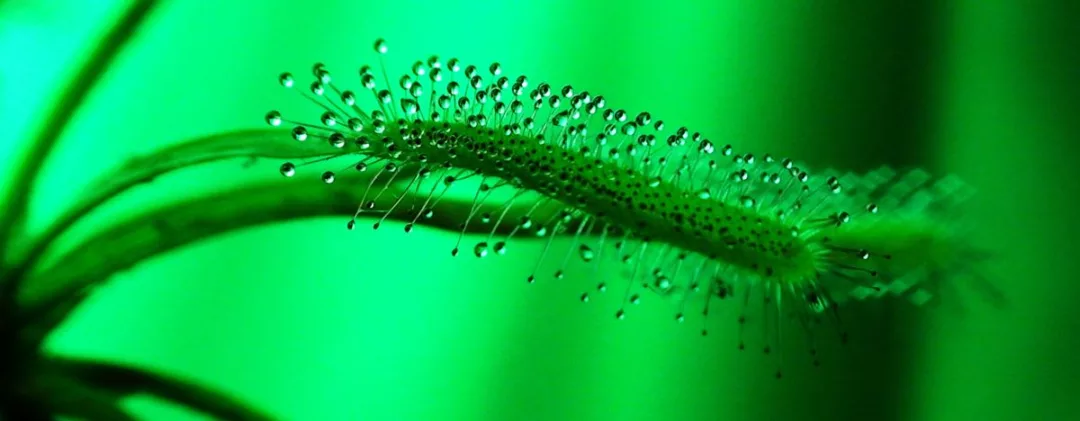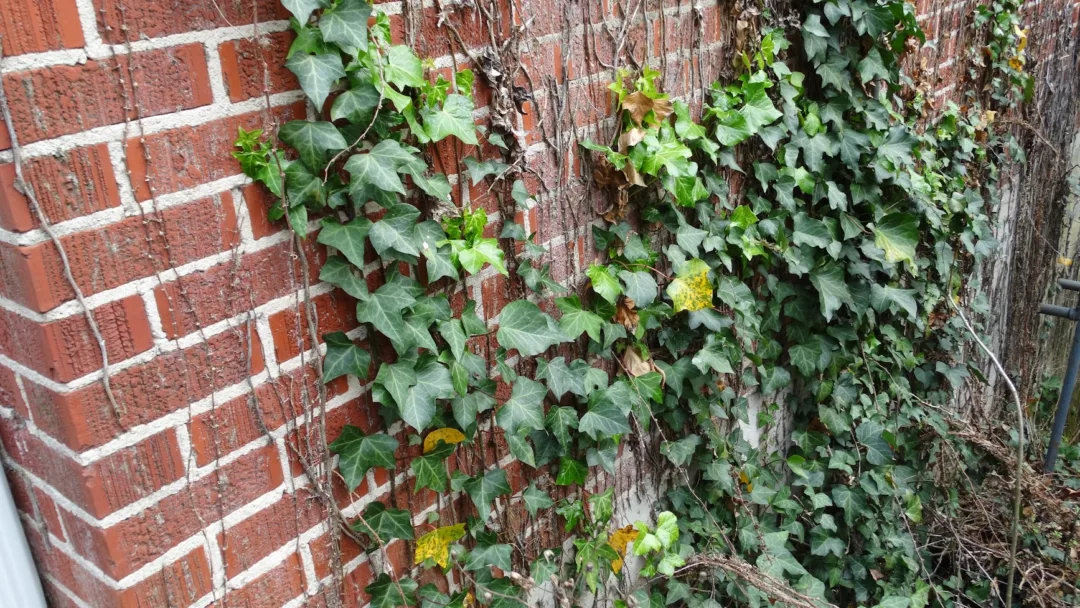Estimated reading time: 6 minutes
Clearing your house of English Ivy—even after the plant has died—can be tough, if not impossible. Patches of brick and plaster have been known to come off buildings before the green-leaved vine surrenders its grip.
Growing Ivy for Science

More than 130 years ago, Charles Darwin discovered that Ivy’s sticking power is thanks to a thin yellow glue secreted from its roots. But since then, little has been known about how the adhesive works.
After an 8-year investigation, scientists report the mechanism in the Proceedings of the National Academy of Sciences. The glue’s secret ingredients are tiny balls of sugar-coated proteins. These nanoparticles are highly uniform, allowing them to spread out and work their way into nooks and crannies of surfaces. Once the adhesive’s water evaporates, the nanoballs concentrate, and the glue hardens with the help of other materials, including calcium and pectin.
The research team thinks mimicking the approach could yield some new high-strength adhesives—and might even work in tissue engineering to stick cells to scaffolds when building artificial organs. The nanoparticles also have the potential to safer targeted drug delivery systems. Unlike many of the current nanomaterials used to ferry chemotherapies into cells, the ivy nanoparticles don’t contain metal, which can be toxic.1More about nanoparticles from Ivy here.
Can I grow Ivy on my brick wall?
Whether on a brick fence, a single wall, or the entire house, Ivy can add a touch of natural beauty to a home, but it’s essential to consider both the pros and cons before buying or cultivating the vegetation.
As it relates to a home inspection, if concealed or covered up, whether inside the home or out, if I can’t see it, I can’t report it. So, yes, Ivy can limit the information in an inspection and therefore, can increase your risk, especially if it ventures over onto painted wood surfaces.
Gary Smith
Pros:

In the summer, the vines (espaliers)2Definition: espaliers /əsˈpalyər,esˈpalyər,əsˈpälyər,esˈpälyər/ – a fruit tree or ornamental shrub whose branches are trained to grow flat against a wall, supported on a lattice or a framework of stakes. may provide shade and help keep your home cooler, while in the winter, if the plant is not deciduous, it can provide an extra layer of protection against the cold wind. A scientific study says it may protect from frost accumulation.3Thermal blanketing by ivy (Hedera helix L.) can protect building stone veneer from damaging frosts.
In some cases, Ivy may act as a natural air filter by trapping dust, dirt, and other pollutants on its leaves. A NASA study found English ivy to be the most effective houseplant for cleaning benzene from the air, removing 89.8% of benzene over 24 hours.4Air Purifying Plants Ivy can add visual interest and charm to your home; if you live on a busy street, it may help reduce noise pollution.
Cons:
If you’re considering buying a home with ivy-covered exterior walls, know that a visual inspection cannot address hidden defects. Ivy can cover important information you may need to consider during the investigative process, most commonly cracks and painted surfaces.
Ivy also takes a bad rap when it comes to trees. Ivy’s aerial roots are just there to attach to the tree, they don’t draw any nutrients from it. The ivy actually takes its food from the soil just like the tree does.
Horticulturalist – P Allen Smith
Ivy can damage your brickwork if it’s not maintained correctly5See other methods of growing vines near your home. It can push against the brick, sometimes causing surface cracks or potentially pushing the masonry units loose. Ask the seller for regular maintenance records that may indicate past issues with the vegetation. The tentacles and tendrils of some climbing ivy can, over some time, dislodge mortar. It can also become a harbor for nesting insects, birds, or other animal life, offering them easy access to the inside of the building.
Never allow ivy to grow till it moves onto your asphalt roof. When wet, the vines can get heavy and potentially lead to water backing up under the shingles, causing a leak. Moss and Ivy, along with collections of dead leaves and branches, will damage the shingles leading to granule loss and shingle finish deterioration.
Once firmly established, Ivy can be difficult to remove. If you no longer want it growing on your home, you may need to hire a professional to remove it carefully without causing damage to your brickwork.

Removing Ivy
If you decide to remove ivy, here are a few tips from the brick industry.
- Work in small areas.
- Avoid pulling the vines away from the wall since this may damage the brick or mortar. Carefully cut away a few square feet of the vine in an inconspicuous area and see how much the ivy has rooted into the brickwork.
- Inspect the exposed area for condition and appearance.
- Visualize the future appearance of the wall with the vines cut away. Repointing the mortar or other repairs may be necessary if the ivy is removed. These issues should help you decide if de-vining is necessary or feasible.
- If you decide to remove the ivy, carefully cut it away close to the wall. There will be some remnants left on the wall. These are “suckers” embedded in the brickwork that previously attached and held the vines.
- DO NOT use chemicals or acids to remove them – since this increases the risk of damaging or staining the wall. The suckers should be left in place until they dry up and turn dark. They can then be removed with a stiff fiber brush and laundry detergent.
- Do not wait too long because if the suckers rot and oxidize, they may become tough and nearly impossible to remove without damaging the wall surface…two or three weeks should be sufficient time.
Overall, allowing ivy to grow on your brick home can have positive and negative effects. It’s important to weigh the pros and cons and carefully maintain the vines to ensure they don’t cause damage to your home.
More Great Articles
This Article's Footnotes/References
- 1More about nanoparticles from Ivy here.
- 2Definition: espaliers /əsˈpalyər,esˈpalyər,əsˈpälyər,esˈpälyər/ – a fruit tree or ornamental shrub whose branches are trained to grow flat against a wall, supported on a lattice or a framework of stakes.
- 3Thermal blanketing by ivy (Hedera helix L.) can protect building stone veneer from damaging frosts.
- 4
- 5See other methods of growing vines near your home
- - - - - - - - - - - - - - - - - - - - -